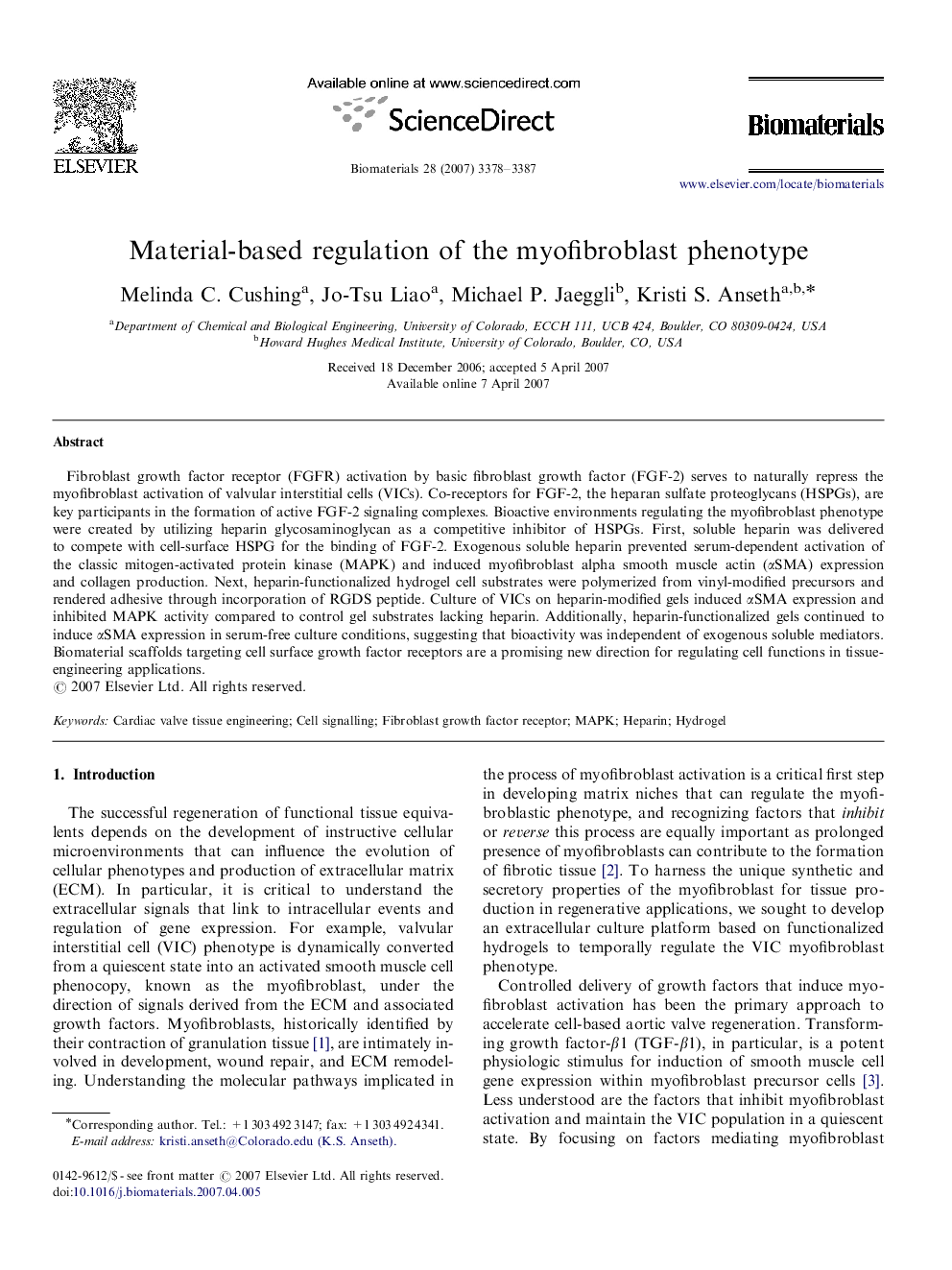| Article ID | Journal | Published Year | Pages | File Type |
|---|---|---|---|---|
| 9890 | Biomaterials | 2007 | 10 Pages |
Fibroblast growth factor receptor (FGFR) activation by basic fibroblast growth factor (FGF-2) serves to naturally repress the myofibroblast activation of valvular interstitial cells (VICs). Co-receptors for FGF-2, the heparan sulfate proteoglycans (HSPGs), are key participants in the formation of active FGF-2 signaling complexes. Bioactive environments regulating the myofibroblast phenotype were created by utilizing heparin glycosaminoglycan as a competitive inhibitor of HSPGs. First, soluble heparin was delivered to compete with cell-surface HSPG for the binding of FGF-2. Exogenous soluble heparin prevented serum-dependent activation of the classic mitogen-activated protein kinase (MAPK) and induced myofibroblast alpha smooth muscle actin (αSMA) expression and collagen production. Next, heparin-functionalized hydrogel cell substrates were polymerized from vinyl-modified precursors and rendered adhesive through incorporation of RGDS peptide. Culture of VICs on heparin-modified gels induced αSMA expression and inhibited MAPK activity compared to control gel substrates lacking heparin. Additionally, heparin-functionalized gels continued to induce αSMA expression in serum-free culture conditions, suggesting that bioactivity was independent of exogenous soluble mediators. Biomaterial scaffolds targeting cell surface growth factor receptors are a promising new direction for regulating cell functions in tissue-engineering applications.
